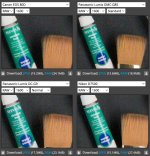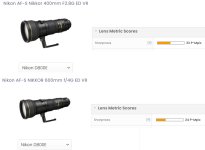I do a lot of the same kind of photography... I completely understand the frustrations and issues.
On their own and in isolation, more FL (zoom) and a larger sensor are both better/good things. But things don't happen in isolation usually; especially when you are changing multiple things simultaneously.
The main advantage of a larger sensor is that it receives more light for any given exposure compensation. I.e. a lightbulb recorded 2x as large (4x the area) onto a sensor that is 2x as large (4x area)
IS 2 stops more light recorded (4x more).... e.g. M4/3 vs FF. But that same increase may be possible by choosing a lens with a wider max aperture.
The advantage of a longer FL exists when the longer lens is also sharper, or when the shorter lens was far out-resolving the sensor. Sometimes that is possible, especially if you are stepping up to a pro level prime. But quite often within a given design/technology a longer FL resolves less than a shorter one, and most modern sensors outresolve most lenses already. Another way to understand it is that both lenses are of the same sharpness and can resolve the same minimum size detail at the same distance... but the longer lens magnifies them more so they cover more pixels...
View attachment 377797
And you are not comparing top level primes, you are comparing super zoom lenses, plus the 150-600C is not one of the best of them. Think of it this way... you basically chose a longer lens that doesn't focus as well.
Remember what I said about "matching dots;" the lens projects dots (details/airy disks) to be recoded by sensor dots (photosites/pixels). Ultimately what matters is that the dots match, not what size they are.
If you have a lens that can resolve to 3 microns and a sensor with pixels of 3 microns, the results will be the same as using a lens that resolves to 6 microns on a sensor with pixels of 6 microns. The fact that the pixels might be larger because they are on a larger sensor doesn't change that. Think of it this way, a perfect lens at f/1 could resolve and average of ~530MP of detail onto a 4/3 sensor. If you could have such a lens, and result, you could enlarge the resulting "negative" much more than you could a 46MP FF result (strictly in terms of resolution).
In your case the simple answer that addresses all aspects is a much sharper and faster pro level prime lens. There is a reason such lenses retain much more of their original value over time than camera bodies and zoom lenses. And it keeps you in the lightweight 4/3 format you prefer.



